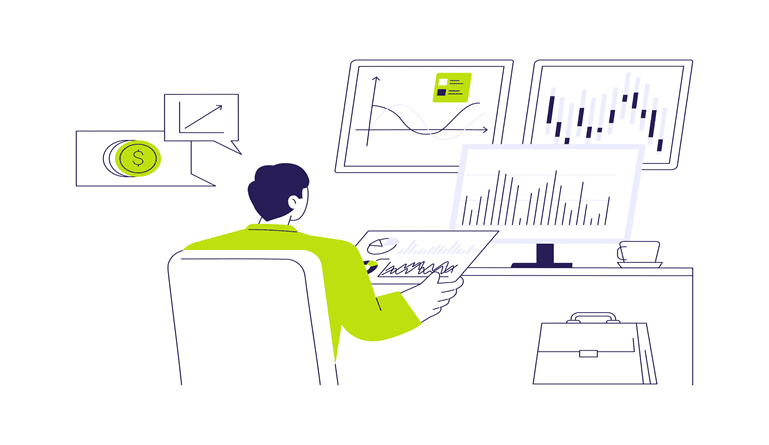A Transaction Processing System is a set of information that processes the data operation in a database system that controls transaction programs. The method of breaking down transactions using a simpler and unified method is called transaction processing.
A transaction program runs by managing already stored data. When a problem occurs during the processing of a transaction, the incomplete transaction must be rerun by the TPS. Although the Transaction processing system is not limited to application programs, it plays a very important role when accessed by multiple users simultaneously. Users of TPS may range from one at a time, groups or thousands of users simultaneously.
Although there were previous versions of transaction processing, SABRE was the first TPS developed in 1970 by IBM for the American airlines. It functioned on two IBM 7090 computers and was intended to process up 83,000 transactions a day. This breakthrough led to the production of other improved versions of the TPS, which are as follows:
- 1970s: UNIVACTransaction Interface Package (TIP). A TP monitor made for UNIVAC 1100/2200 series
- 1976: The Hewlett-Packard NonStop system
- 1979: HoneywellMultics Transaction Processing
- 1980: Tuxedo, anAT&T innovation, currently owned by Oracle Corporation(1). it is a cross-platform TPS.
- 1980: GEMCOS (Generalized Message Control System of 1980) supported by Burroughs corporation.
- 1985: Digital Equipment Corporation (DEC) Application Control and Management System (ACMS).
- 1980 – 1990: Transaction Management eXecutive(TMX)
- 1991: TransarcEncina
Transaction processing system characteristics
-
Dependable & readjustment
A TPS must be reliable with low failure rates and even when there is an error during processing, it must have a quick and accurate recovery system.
-
Swift response
A Transaction Processing System’s fast performance is very vital as it determines the turnaround time from transaction input to the production output which should be a few seconds or less.
-
Controlled processing
Must maintain the organization’s operations especially if it is specific to the running of operations, it should be both time and cost-effective by reducing the number of times data must be processed.
-
Inflexibility
A TPS must exhibit a strict adherence to data processing and make sure all transactions must be processed in the same way to reduce error occurrence.
Importance of transaction processing system
-
Handling of operations
one distinct importance of a TPS is its ability to simultaneously process several transactions. An up-to-date transaction processing system can concurrently manage and coordinate thousands of customer orders. This allows the business to make the selling process less complicated for customers and also provides an online option to customers.
-
Untapped markets
A TPS gives business to ease of sales as it allows the benefit of implementing a transaction anywhere in the world. This gives the business a wider reach and enables the business to reach and gain customers from around the world.
- It reduces the chances of error and saves money and time with the use of an automatic process.
- A TPS provides real-time benefits for businesses of all types. It is very vital to new-age businesses, especially those with a vast Online presence.
Advantages of the transaction processing system
- The TPS keeps a stable database and reduces risk of loss of user information in the occurrence of terminal or network failure.
- The TPS is able to effectively recover from operating system failure and also handle system failures depending on what stage the transaction was in when the system failure occurred.
- The TPS can process large amount of data in real time or batches.
- The use of TPS in organizations is a key feature in improving customer service and satisfaction.
- A TPS allows for the user/customer to have a level of reliability and confidence during transactions.
- TPS is swift and cost-effective.
- The use of TPS in businesses minimizes the occurrence of error during data transactions.
- TPS is available in both batch and real time process
- The TPS is designed to be user friendly.
- It is versatile as it encourages the use of online payment system in real time and increases more payment methods.
- TPS can function anywhere. This means that location, geography, language, or methods are a barrier to using a transaction processing system.
Transaction processing system disadvantages
- TPS must be designed to exclusively fit the business/Organization needs.
- TPS may be expensive to set up and install.
- The use of TPS lacks a standard format.
- Installation of TPS may be disturbed by hardware and software incompatibility.
- Maintenance of a TPS requires the use of specialized personnel.
- A TPS can be difficult to handle if the business is not large enough to utilize it.
- User may need a good internet connection to access its services.
- Third party interference may occur in real time (such as hackers and theft of identity etc) due to its online nature. Firewalls must be constantly upgraded else it will lead to loss of customers as a result of not being secure.
- TPS requires a lot of staff working in groups to keep up inventory.
- Requests may overload system that may lead to crashing of websites and loss of information in real time.
Transaction processing modes
The two types of TPS are the online mode and batch mode
-
Online mode
This is also known as real-time processing or stream processing; it is the processing of data within a short time which provides an immediate result. Real-time processing performs its transactions exclusively; it is designed to ensure a swift result on the condition of the transaction. It is the best procedure for dealing with individual transactions.
Examples of online modes are bank ATMs, traffic control systems, point of sale terminals (P.O.S.), microfinance loan system and modern computer systems such as the PC and mobile devices.
Also read: 6 Best Mobile POS Systems You Need to Know -
Batch mode
This process is designed for repeatedly used programs that are done with minimum human interaction. Also known as Batch processing, it is the processing of groups of transactions simultaneously using an operating system.
This method is designed to be capable of breaking down a massive series of programs but has a significant disadvantage as there is a delay in the transaction result.
In Batch mode, transactions can be processed without any end-user interface and may also be planned to start-up according to the available resources.
Batch transaction process examples include bill generation and check clearance.
Characteristics of online transaction processing
- Swift data processing.
- Immediate confirmation of a data transaction which may not require access to an online database immediately.
- It works efficiently by linking network terminals to mainframe computer
- It allows thousands of users to simultaneously request and perform transactions real time.
Characteristics of batch processing
- It collects transaction data in batches and eventually processes them in groups.
- Delay may occur during data processing.
- It cost efficient and offers low processing costs per transaction.
- It is used for processing data that does not require immediate results, for example, check payments.
Transaction Processing System Functions
-
Processing in a batch
Processing batch transactions involves data collection and batch grouping. Data collected are stored in the form of clusters and may be processed anytime. This long-established technique was well utilized in the lack of information technology.
-
Processing in real-time
Recent technology innovations allowed the widespread use of real-time processing. RTP maintains instant data processing with the aim of providing a swift transaction verification. It is highly versatile, and it can work efficiently as a multi-user interface that can be accessed where there is an online network.
TPS can also execute input, output, storage, and processing functions.
Input functions: includes the securing of data on the source document, entering of input data in the system and also the validation of data.
Output functions: includes the production of the result of the transaction through a screen, monitor or paper.
Storage functions: This is the method by which data is stored for use on the TPS. It involves the storage of information, accessing, sorting, and updating the storing of data.
Processing functions: This is a process by which data is being transformed; it includes calculation, computation, and immediate result.
How does Transaction Processing System enhance the operational productivity of an organization?
TPS enhances productivity through the following:
-
Performance
TPS efficiently generates on-time results for transaction processes. By being proficient it is able to process a large number of transactions at a particular time.
-
Continuous availability
TPS should be a stable and reliable system that is not susceptible to easy collapse. Interruption in the use of TPS in an organization can lead to serious work disturbance and financial consequences.
-
Data integrity:
due to its ability to maintain the same method for all transactions processed, it protects data and easily defends any error and hardware/ software issues.
-
Ease of use
By being user-friendly, it encourages human interaction/interface and decreases errors from inputting of data. It should be designed in such a way that it makes it easy to comprehend and able to guard users against making mistakes during data-entry.
-
Modular growth
The TPS hardware and software components should be able to be upgraded individually without completely shutting down business transactions and requiring a total overhaul.
-
Improved security
due to controlled processing, only authorized personnel/employees are able to access it at a time thereby reducing security threats from the third parties and ensuring smooth operations.
Final Thoughts
Transaction processing systems offer a unique responses and can be structured to user/ organization requirements, although it is very vital to make a decision to choose the most appropriate method which relies heavily on the quantity of data and the type of business/task it is being used for.
The following may be considered when choosing the type of TPS to be used:
-
Type of data transaction
Batch processing works for computing complex data transactions that are valuable at reducing cost for organizations that are involved with high data traffic, unlike the real-time processing that is efficient in less complex situations.
-
Results
The real-time TPS offers an on-time response on each processed transaction that makes it more appropriate for smaller enterprises which are very different from the batch processing that is time-consuming. Outputs include transaction documents, query response, and reports.
-
Customer use
In batch processing, user interaction is not necessary however the real-time processing requires user interface to process each transaction completely.







